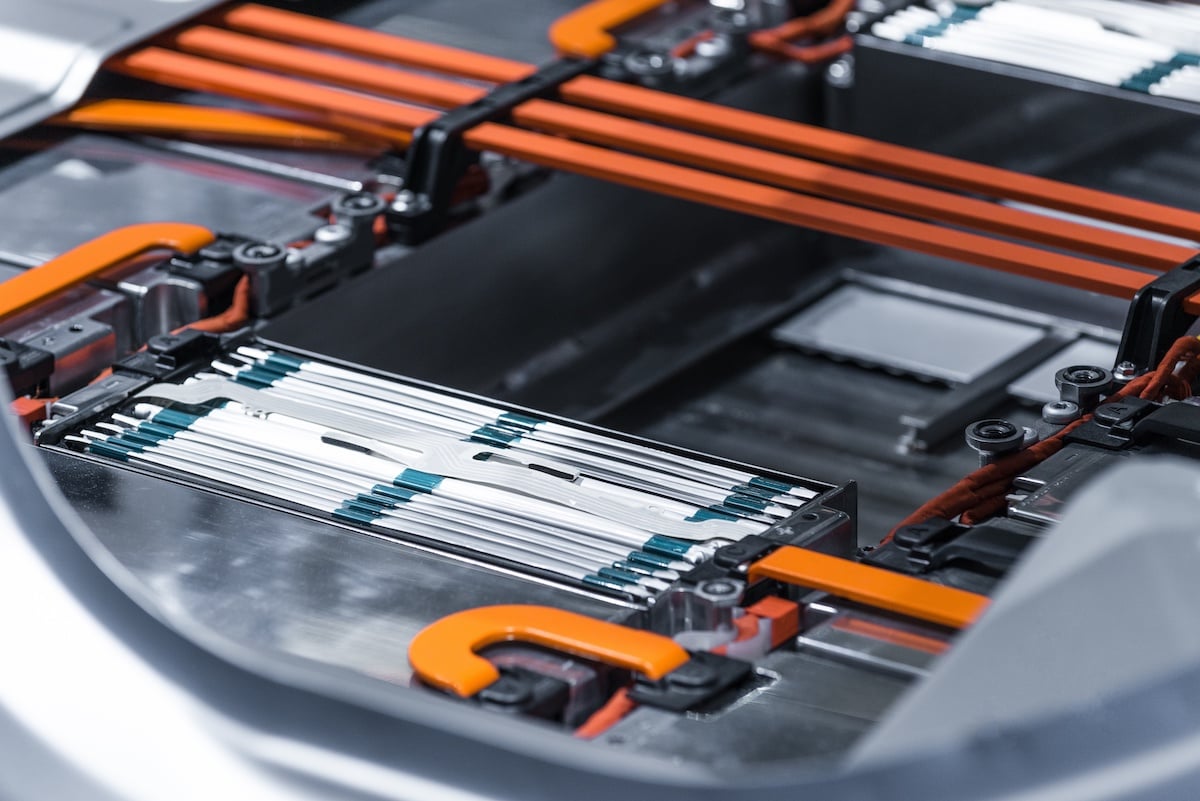Monolithic microwave integrated circuit (MMIC) amplifiers are widely used in defense radar systems. The industry recognizes them as a compact, high-performance option that’s reliable and easy to integrate. Whether they serve a receive (e.g., low noise amplifier (LNA)) or transmit (e.g., power amplifier (PA)) function, MMIC amplifiers rely on bypass capacitors to perform their core function to amplify microwave signals.
Peter Matthews

Recent Posts
Capacitors Support Radar MMIC Amplifiers via Bypassing
Topics: Capacitor
Looking Closer at DC Link Capacitors in Electric Vehicles
DC link capacitors are commonly used in power converters as an intermediary buffer between an input source to an output load that have different instantaneous power, voltages, and frequencies. In electric vehicle (EV) applications, DC link capacitors help offset the effects of inductance in inverters, motor controllers, and battery systems. They also serve as filters that protect EV subsystems from voltage spikes, surges, and electromagnetic interference (EMI).
Topics: Capacitor, Automotive, Electric Vehicles
Battery energy storage systems (BESS) are named for their function. They capture, accumulate, and store energy in rechargeable batteries to be discharged later. Industrial facilities, homes, electric vehicles (EVs) and the like rely on these systems for backup power and operational efficiency.
Common Capacitors in Solar Power Conversion Systems
Ongoing innovation in solar power electronics and rising interest in photovoltaic (PV) installations underscores the importance of robust and efficient electronic components. Capacitors play a key role in power conversion systems as they function to smooth and regulate power flow, protect against voltage surges and filter unwanted signals.
Topics: Capacitor
Capacitor Support in Power Amplification for Radar Systems
In radar systems, power amplifiers serve an essential role in transmitting signals that probe the environment of interest. They boost signal strength and maintain its quality to achieve the intended range and resolution of the overall system.
Fundamental Capacitor Functions in the World of Electronics
When considering capacitor selection for a given circuit, whether you’re focused on power electronics or deep in the world of RF, it's important to remember that some of a capacitor’s fundamental roles are universal.
In our review of today’s trends in power electronics, we discussed the growth in the renewable energy market and the resulting increased investment in renewable energy technologies, such as wind. As a result, global demand for wind power is surging. To keep pace, not only are there more wind turbines being installed onshore and offshore, but the generation capacity of each turbine is also growing substantially. This is changing the requirements for the power electronics needed for these systems. In this blog, we review some of the key wind power generation trends fueling the ability to provide increased capacity and driving changes in the power electronics required for these systems.
Exploring the Capacitor Technologies Needed in Electric Vehicles
The electrical power systems in most modern technologies, like electric vehicles (EVs), are complex. In EVs specifically, power systems are responsible for performing many tasks such as converting AC to DC and DC to AC as well as managing changing power levels in DC/DC conversion. When performing these tasks, manipulating AC voltages and removing noise from DC voltage requires passive components such as capacitors, to perform many “jobs” inside the power system. But no single capacitor type can perform all these jobs since each one has different requirements for voltage, size, temperature, and reliability. Therefore, a variety of capacitor technologies, such as ceramic, film, and aluminum, are required to meet all these needs.
Topics: Capacitor, Electric Vehicles
The Role of Sensing Technologies in Delivering Personalized Patient Care
Sensing technologies facilitate the gathering of detailed and accurate health data that are unique to each individual. The availability of real-time, precise data presents more opportunities for tailored approaches to treatment and care management, aligning medical interventions with specific patient needs. As sensing technologies advance, they enable a more nuanced understanding of individual health patterns, driving innovation in personalized care that aligns with the genetic, environmental, and lifestyle factors of each patient. Here are some key areas where sensing technologies are supporting individualized care.
This is the fifth installment in our RF Components for Radar series. In the first installment, we provided an overview of the key functional units in radar, including duplexing, filtering, power amplification, waveform generation, low-noise amplification (LNA), receiving and analog-to-digital conversion (ADC). Since then, we’ve covered duplexing, switch filter banks and filters in detail. In this post, we’ll discuss what phase can tell us about filter performance in radar applications.
Topics: RF and Microwave






%20(1).png)



